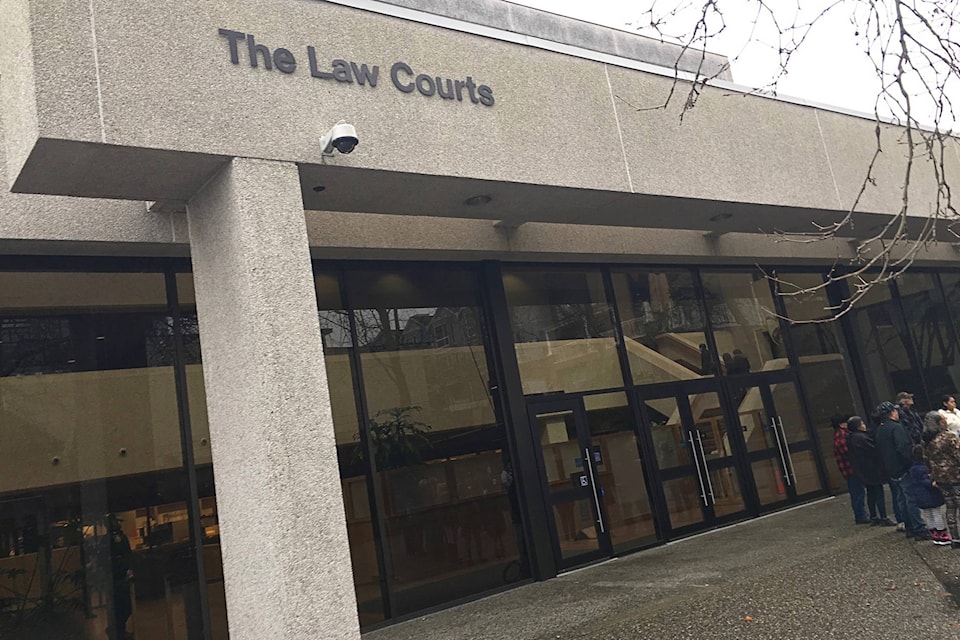A former restaurant worker who alleged work by two dentists 91ôÐêáòÆóç including one who practises in South Surrey 91ôÐêáòÆóç 91ôÐêáòÆóçdramatically altered91ôÐêáòÆóç her life has had her negligence claim dismissed in B.C. Supreme Court.
In the claim, Maria De Sousa alleged Dr. John Rogers 91ôÐêáòÆóç of White Rock Dental Group 91ôÐêáòÆóç breached the standard of care when he extracted a lower molar during her first appointment with him in June 2011, 91ôÐêáòÆóçdespite not being able to find an issue with the tooth that would justify this most aggressive of treatment methods.91ôÐêáòÆóç
Dr. Michael Racich, she alleged, breached the standard of care when he 91ôÐêáòÆóçchose to place three implants91ôÐêáòÆóç despite 91ôÐêáòÆóçknowledge of the possibility of neuropathic pain.91ôÐêáòÆóç Those treatments occurred between December 2011 and January 2013.
However, in reasons for judgment posted last Friday (Feb. 1), Justice Stephen Kelleher found that evidence presented 91ôÐêáòÆóçdoes not establish91ôÐêáòÆóç that either of the dentists breached the standard of care, or that their actions caused the damages suffered.
In his reasons, Kelleher notes 91ôÐêáòÆóça history of treatment91ôÐêáòÆóç for De Sousa91ôÐêáòÆóçs extracted tooth dating back to 2004 and involving at least 11 other dental professionals, as well as a neurosurgeon. Several of those professionals testified in the civil trial, which was heard last year over 13 days in June, July and November.
Kelleher made his ruling on Feb. 1.
According to the reasons for judgment, the court heard that De Sousa was a patient with one South Surrey dentist for just over two years starting in July 2004. In that time, De Sousa did not follow recommendations for regular visits, nor did she proceed with a recommended crown on the tooth in question, which was suggested following a 91ôÐêáòÆóçfractured restoration91ôÐêáòÆóç on the tooth that De Sousa said was 91ôÐêáòÆóçtrapping food,91ôÐêáòÆóç the court heard.
Procedures performed or recommended by various dentists over the years following included root canals, crowns and specialist referrals. There were also suggestions the pain could be due to a neurological condition.
De Sousa testified that after Rogers removed her tooth, she was left with a sharp burning pain. While she denied insisting Rogers extract the tooth, she agreed that she had said, in her examination for discovery, that she 91ôÐêáòÆóçasked91ôÐêáòÆóç for the extraction.
De Sousa also testified that implants were the only treatment Racich suggested, that all she was given to prepare for them was a tube of Colgate toothpaste, that she had a lot of pain after the procedures and that Racich told her it was neuropathic pain.
De Sousa91ôÐêáòÆóçs husband and daughters testified that De Sousa often complained of 91ôÐêáòÆóçburning pain91ôÐêáòÆóç on the right side of her mouth after the extraction. She stopped dancing and driving, and lost interest in gardening, among other things, the court heard.
A neurologist testified that De Sousa has persistant idiopathic facial pain; described in the court document as 91ôÐêáòÆóça disorder of unknown cause which can be exacerbated by dental procedures.91ôÐêáòÆóç
Those procedures, the neurologist testified, are commonly an effort to address the initial complaint, but are often futile as the disorder is 91ôÐêáòÆóçtypically not of primary dental origin.91ôÐêáòÆóç
In his reasons, Kelleher said De Sousa91ôÐêáòÆóçs recollection of the circumstances or her treatment and her interaction with the dentists who saw her 91ôÐêáòÆóçwas, to put it kindly, imperfect.91ôÐêáòÆóç
91ôÐêáòÆóçMs. De Sousa91ôÐêáòÆóçs evidence must be considered in light of her relatively poor memory. Moreover, much of what she told the Court is inconsistent with the 91ôÐêáòÆóçprobabilities of the case as a whole,91ôÐêáòÆóç91ôÐêáòÆóç the judgment states.
Kelleher dismissed the evidence of one expert called by the plaintiff, noting 91ôÐêáòÆóçdeeply flawed91ôÐêáòÆóç instructions from counsel that included asking the expert to provide an opinion 91ôÐêáòÆóçregarding Maria De Sousa91ôÐêáòÆóçs general disability arising from her medical malpractice injuries and the extent to which this interferes with her activities91ôÐêáòÆóçÎ91ôÐêáòÆóç
The instructions 91ôÐêáòÆóçsuggest that (the expert) was instructed to assume that there has been negligence and medical malpractice,91ôÐêáòÆóç Kelleher found.
91ôÐêáòÆóçAs such, any conclusion reached by an expert based on these instructions is, as the defendants argue, a self-fulfilling prophecy.91ôÐêáòÆóç
Kelleher described the defendants91ôÐêáòÆóç evidence as 91ôÐêáòÆóçunshaken in cross-examination.91ôÐêáòÆóç
Kelleher found that De Sousa has a history of self-diagnosis and of refusing treatment when she disagrees with the professional. While he said that is her right, 91ôÐêáòÆóçit does not constitute tortious conduct on the part of the defendants.91ôÐêáòÆóç



